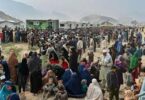Khyber Pukhtunkhwa government has decided to establish 25 offices of Tehsil Municipal Administration in the merged tribal districts as a first step for setting up institutional structure there. The areas which were previously administered by the federal government did not have the administrative, judicial and local government structure on the pattern of settled district of the province. The Higher Judiciary had already informed the previous PTI provincial government about the estimated financial outlay for the creation courts of lower judiciary at the district and Tehsil level.
Setting up of local government institutions and making functional elected local bodies will ensure judicious utilisation of developmental funds with the community participation, bringing to an end the decades long era of lopsided development. However, the capacity issues of the national building departments have to be effectively addressed to avoid the lapse of funds. The available data for the reveals that during last fiscal year bulk of the allocated funds for the uplift of tribal districts could not be used. The livestock department could use 30 percent of the released money; housing department 22 percent; public health engineering 21 percent; and health department 21 percent.
The proximity of tribal districts with Afghan border has adversely impacted the life of the people first after the occupation of Afghanistan by the Soviet troops and then after 9/11 the induction of US led NATO forces. The reconstruction and rehabilitation work that has been started after clearing these areas from the militant outfits need impetus which is possible only when the local government system is put in place and made fully functional. The federal government intends to allocate 3 percent of the next National Finance Commission Award for which the Punjab government has also shown willingness.
The then additional Chief Secretary of former FATA Sikandar Qayyum had told that a 10 year development plan Worth RS 100 billion for the socio-economic uplift had been finalised. The utilisation of development funds would need strict monitoring to eliminate the element of misappropriation and skewed priorities. Moreover, both physical and social infrastructure in the tribal districts is in a dilapidated condition. In addition to normal allocations under the Annual development Plan, special development packages will also be required for the reconstruction and uplift projects. The condition of district level hospitals is not enviable and direly need equipment and well trained doctors and paramedics. Components of primary healthcare like basic health units and rural health centers have to be set up. Likewise, the condition of existing schools and colleges need urgent improvement. Female literacy rate is dismally low and has to be enhanced by opening new schools and colleges.
There is dearth of employment opportunities in the tribal districts. These areas have great potential in agriculture, forestry, mining, tourism and industry. The tribal district of Mohamand will get irrigation water from Mohamand dam on the River Swat and North Waziristan will be provided water from Kurran Tangi dam. However, in other tribal districts water from springs, rains and flash floods can be conserved with small dams. It will give a big boost to the production of cereal crops, vegetables, beans and lintels and a variety of fruits. Mining with the application of modern technology and their processing will benefit these areas in terms of humming business activities and employment generation.
Necessary raw material is available in abundance for small and medium scale manufacturing. The Plan of Reconstruction Opportunity Zones (ROZS) needs to be revived and implemented with liberal fiscal and monetary incentives and ensuring uninterrupted power supply. Bank credit on easy terms and a tax holiday for at least 10 years will persuade the local and foreign entrepreneurs to invest in the industries of tribal distracts. It is time that both the federal and provincial government joins hands and coordinates their efforts for setting up a strong institutional structure to streamline the pace of socio-economic uplift in tribal district.






